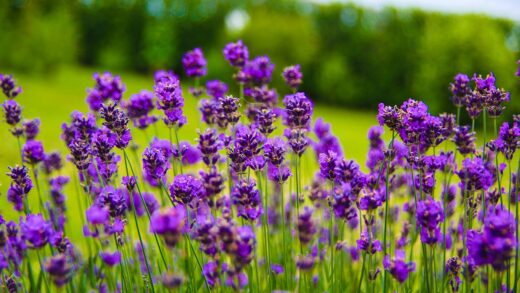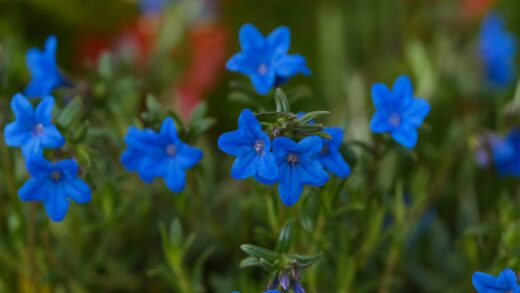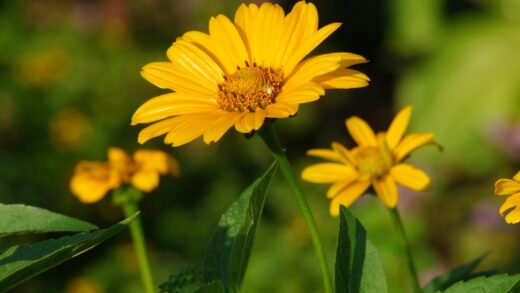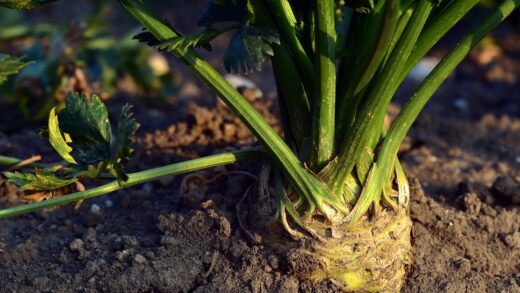Successfully overwintering Hosta ventricosa is a crucial step in ensuring its long-term health and vigorous return each spring. As a hardy herbaceous perennial, it is well-equipped by nature to survive cold temperatures by entering a period of dormancy. During this time, the foliage dies back completely, and the plant’s life force is stored underground in its rhizomatous root system. While the plant is inherently resilient, the gardener’s role in preparing it for the winter months can significantly impact its survival and performance in the following season. Proper autumn cleanup, providing appropriate insulation, and ensuring suitable soil conditions are all key components of a comprehensive overwintering strategy. This proactive care helps protect the dormant crown and roots from the stresses of freezing temperatures, excessive moisture, and fluctuating conditions.
The overwintering process begins in the autumn as the plant’s growth naturally slows in response to shorter days and cooler temperatures. The lush green leaves will gradually turn yellow and then brown, eventually collapsing as the plant transfers energy from the foliage down to the roots for storage. This natural senescence is a critical part of the plant’s preparation for dormancy and should be allowed to proceed without interference. The primary goal for the gardener during this transition is to create a clean and protected environment for the dormant crown.
One of the most important tasks in preparing Hosta ventricosa for winter is autumn sanitation. The decaying leaves, while a natural part of the cycle, can create a damp, sheltered environment that is ideal for overwintering pests, particularly slugs and their eggs. It also provides a habitat for fungal spores, which can lead to disease problems in the spring. By removing the dead foliage after the first hard frost has killed it back completely, the gardener can significantly reduce the pest and disease pressure for the following year.
Protecting the crown from the harsh elements of winter is another key consideration. While Hosta ventricosa is typically hardy in zones 3 through 8, a layer of insulating mulch can provide valuable protection, especially in colder climates or in gardens where snow cover is unreliable. This insulation helps to moderate soil temperatures, preventing the damaging effects of repeated freezing and thawing cycles which can heave the plant out of the ground and expose its roots. With these careful preparations, the hosta can rest securely through the winter, ready to burst forth with renewed energy in the spring.
Autumn garden cleanup
The process of preparing Hosta ventricosa for winter dormancy begins with a thorough autumn cleanup. This task is best performed after the first one or two hard frosts have caused the leaves to collapse and turn mushy. At this point, the plant has completed the process of reabsorbing nutrients from its leaves and has entered full dormancy. Attempting to remove the leaves before they have fully died back can interfere with this vital energy storage process, potentially weakening the plant for the following season.
More articles on this topic
Using a sharp pair of pruning shears or scissors, cut the dead foliage back to within an inch or two of the ground. This sanitation is crucial for several reasons. The decaying leaves create a perfect overwintering site for slugs and snails, as well as their eggs. Removing this debris eliminates a primary source of these pests, meaning you will face a significantly smaller population when the new, tender hosta shoots emerge in the spring. This single act can be one of the most effective forms of slug control.
Furthermore, the dead foliage can harbor fungal spores from diseases such as anthracnose that may have been present during the growing season. If left in place, these spores can easily re-infect the new growth in the spring as soon as conditions become favorable. By removing and disposing of the old leaves—preferably by bagging them or burning them, rather than adding them to the compost pile—you break the disease cycle and promote a healthier start to the new season.
A clean garden bed also discourages rodents like voles and mice from making their homes near your hostas. These animals can tunnel under snow cover during the winter and feed on the dormant crowns and roots of the plants, causing severe damage that may not be apparent until the plant fails to emerge in the spring. By removing the protective cover of dead leaves, you make the area less attractive to these destructive pests, adding another layer of protection for your dormant plants.
The importance of mulching
Once the autumn cleanup is complete and the ground has begun to freeze, it is time to apply a protective layer of winter mulch. The primary purpose of winter mulch is not to keep the plant warm, but rather to keep the soil consistently cold and frozen. The most significant danger to dormant perennials during the winter is the damage caused by repeated freeze-thaw cycles. When the soil freezes, it expands, and when it thaws, it contracts. This movement can heave the crowns of plants right out of the ground, exposing them and their roots to drying winds and frigid temperatures.
More articles on this topic
A layer of insulating mulch helps to moderate the soil temperature, preventing it from thawing during brief winter warm spells and then refreezing when the cold returns. This creates a more stable environment for the dormant roots. The best time to apply winter mulch is after the ground has already frozen, typically in late autumn or early winter. Applying it too early, when the ground is still warm, can trap heat and moisture, potentially leading to crown rot, and it can also provide a cozy winter home for rodents.
Excellent materials for winter mulch include shredded leaves, pine needles, straw, or evergreen boughs. These materials are light and airy, so they trap air and provide good insulation without becoming compacted and waterlogged like a heavy, wet layer of compost might. Apply a generous layer, about three to four inches deep, over the top of the dormant hosta crown and the surrounding soil. The light texture of these mulches also makes them easy to remove in the spring.
It is equally important to remember to remove the winter mulch in the spring. This should be done gradually as the weather warms and the threat of a hard frost has passed. Raking the mulch away from the crowns allows the sunlight to warm the soil, signaling the plant to break dormancy and begin its new season of growth. Leaving the mulch in place for too long can delay the emergence of the new shoots and can trap excessive moisture around the crown as spring rains begin, which could lead to rot.
Overwintering in containers
Overwintering Hosta ventricosa that is planted in containers requires a different approach than for those planted in the garden. Plants in containers are much more vulnerable to cold temperatures because their root systems are not insulated by the large thermal mass of the earth. The soil in a pot can freeze solid much more quickly and to a much colder temperature than the ground, which can kill the roots and, consequently, the entire plant. Therefore, additional steps must be taken to protect container-grown hostas.
One of the most reliable methods for overwintering potted hostas is to move the container to a sheltered location where it will be protected from the harshest winter conditions. An unheated garage, a cold cellar, or a garden shed are all excellent options. The goal is to keep the plant cold enough to remain dormant but to prevent the root ball from freezing solid repeatedly. The plant will not need light during dormancy, but it will require a minimal amount of water, perhaps once a month, just to prevent the soil from becoming completely bone-dry.
If a sheltered indoor space is not available, the pot can be “heeled in” to the ground for the winter. This involves digging a hole in a vacant spot in the garden that is large enough to accommodate the entire pot. Place the pot in the hole so that the rim is level with the surrounding soil. Then, backfill the soil around the pot and cover the top with a thick layer of mulch, just as you would for a hosta planted in the ground. This uses the natural insulation of the earth to protect the roots from extreme cold.
For those in slightly milder climates or with very large, immovable containers, another option is to group several pots together against a protected wall of the house, preferably on the north or east side to avoid winter sun that could cause premature thawing. The pots can then be wrapped in bubble wrap or burlap and heavily mulched with leaves or straw packed in and around the containers to provide a significant layer of insulation. This creates a microclimate that helps to buffer the roots against the most extreme temperature fluctuations.
Preparing for spring emergence
The care taken during the overwintering process culminates in the preparation for the plant’s reawakening in the spring. As the days lengthen and the soil begins to warm, it is time to start removing the protective winter mulch. This process should be done gradually over a week or two, rather than all at once. A sudden, complete removal can expose the dormant crown to a late, hard frost, which can damage the emerging shoots that may be just below the soil surface.
Begin by gently raking away the top layer of mulch. A few days later, remove a little more, until the crown of the plant is fully exposed. This allows the sun and air to warm the soil directly above the crown, which encourages the plant to break dormancy. This is also a good time to inspect the area for any slug or snail eggs that may have survived the winter and to apply a preventative layer of slug bait if they have been a problem in previous years. This proactive measure can protect the tender new shoots, which are especially vulnerable to pest damage.
Once the danger of a hard frost has passed and the new shoots, or pips, are beginning to emerge, it is the ideal time to apply a balanced, slow-release fertilizer around the base of the plant. This will provide the necessary nutrients to fuel the rapid growth that is about to occur. It is also the perfect time to apply a fresh layer of summer mulch, such as compost or shredded bark, around the plant to help conserve moisture and suppress weeds as the growing season gets underway.
By following these careful steps—from autumn cleanup and winter protection to the gradual unveiling in the spring—the gardener ensures that Hosta ventricosa has everything it needs to emerge from its winter slumber with health and vigor. This thoughtful transition from dormancy to active growth sets the stage for a successful season, rewarding the gardener’s efforts with a magnificent display of lush, architectural foliage that will grace the garden until autumn returns once again.




















